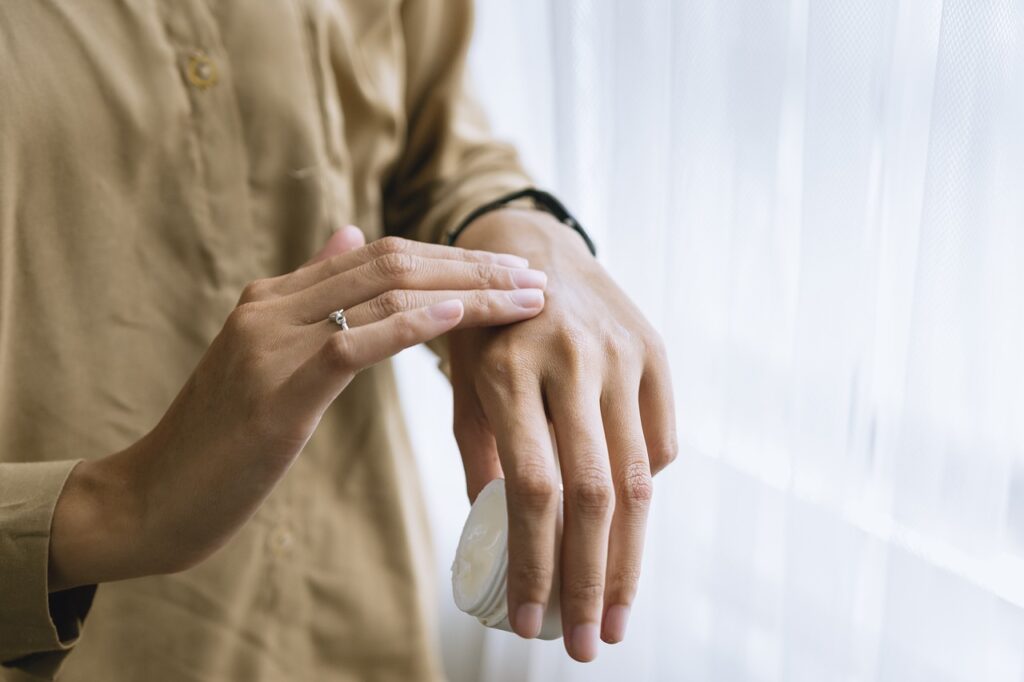Skin Cancer: The Unseen Threat and How to Protect Yourself
One in five people in the United States will be diagnosed with skin cancer by the age of seventy, making it the most common type of cancer in the country. However, the silver lining is that skin cancer is largely preventable through simple measures that allow you to safely enjoy the sun. Additionally, early detection plays a crucial role in successful treatment outcomes. Here’s a closer look at how the sun damages the skin, ways to protect yourself, and the importance of regular skin checks.
How Does the Sun Damage the Skin?
There are two main types of harmful ultraviolet (UV) rays that reach us from the sun: UVA and UVB, both capable of causing skin damage but in different ways:
- UVA Rays: These rays penetrate deeply into the skin, destroying collagen and elastin, which are responsible for skin elasticity and youthfulness. This damage accelerates aging, leading to wrinkles and sagging, while also increasing the risk of various types of skin cancer.
- UVB Rays: These are the rays responsible for sunburn, affecting the outer layer of skin and causing redness, pigmentation, and DNA damage in skin cells over time, which heightens the risk of skin cancer.
It’s important to note that harmful rays do not only come from the sun; tanning beds also significantly increase the risk of skin cancer due to their high UV exposure levels. Studies have shown that people who use tanning beds regularly are at a higher risk of developing skin cancer compared to those who do not.
Preventing Skin Cancer
Excessive sun exposure is a major cause of skin cancer, accounting for approximately 90% of skin cancer cases. However, there’s no need to panic; there are many effective ways to protect your skin and enjoy the outdoors without the fear of skin cancer.
- Use Sunscreen
- Why Sunscreen is Important: Applying a broad-spectrum sunscreen with an SPF of 30 or higher daily is the most crucial step in protecting your skin from harmful UV rays, even on cloudy days.
- How to Use Sunscreen:
- The Right Amount: Use an adequate amount of sunscreen—about one ounce (a shot glass full) for your entire body. For the face and neck, about a teaspoon is recommended.
- Reapplication: Reapply every two hours, or immediately after swimming or sweating.
- Full Coverage: Apply sunscreen on all exposed skin areas, including sensitive spots like the face, neck, and ears.
- Consistency: Use sunscreen year-round, regardless of the weather.
- Additional Sun Safety Tips
- Protective Clothing: Wear loose-fitting clothing in light colors that cover as much skin as possible. A wide-brimmed hat can provide extra protection for your face and neck.
- Seek Shade: Avoid direct sunlight during peak hours, particularly between 10 a.m. and 4 p.m., when UV rays are strongest.
- Sunglasses: Use sunglasses that block 100% of UVA and UVB rays to protect your eyes and the sensitive skin around them.
Regular Skin Checks and Early Signs
Early detection of skin cancer is key to successful treatment. Even the most aggressive type of skin cancer, melanoma, can be treated effectively if diagnosed and treated early.
Why Regular Skin Exams Matter: Dermatologists recommend getting a professional skin exam at least once a year, or more frequently if:
- You have fair skin, light hair, or red hair (although skin cancer can occur in anyone).
- You have a family history of skin cancer.
- You have experienced severe sunburns in the past.
Dermatologists use specialized tools to examine moles and other skin spots for any unusual changes that may indicate skin cancer and determine if further tests, such as a biopsy, are necessary.
How to Self-Examine Your Skin: In addition to professional check-ups, you should regularly perform self-exams to look for early signs of skin cancer, including:
- Changes in the size, shape, or color of existing moles or freckles.
- Itchy red spots or patches.
- Rough, scaly areas that don’t heal.
- Shiny red bumps or skin-colored nodules.
- Sores that do not heal and continuously bleed.
Types of Skin Cancer
There are three main types of skin cancer, each with different characteristics and levels of risk:
- Basal Cell Carcinoma (BCC):
- The most common type of skin cancer, it develops in the basal cells in the outer layer of skin. BCC is usually slow-growing and rarely spreads to other parts of the body, making it highly treatable when caught early.
- Squamous Cell Carcinoma (SCC):
- This type develops in the squamous cells of the upper layer of the skin. If not detected early, SCC can penetrate deeper layers of skin and may metastasize to other body parts, making early detection crucial.
- Melanoma:
- The least common but most dangerous form of skin cancer, melanoma arises from pigment-producing cells called melanocytes. It can spread quickly to other organs if not caught early, making awareness of its signs and symptoms critical.
Your Skin, Your Responsibility
Protecting your skin today can save your life tomorrow, and early detection of skin cancer is your best defense. Regular check-ups and being vigilant about any changes in your skin can make a significant difference in outcomes. If you notice any unusual changes, don’t hesitate to consult a dermatologist. Remember, enjoying the sun safely and responsibly is vital to maintaining healthy skin and reducing your risk of skin cancer. By implementing these protective measures and staying informed, you can enjoy the great outdoors while keeping your skin healthy and vibrant.


